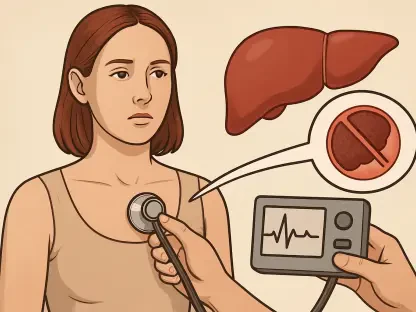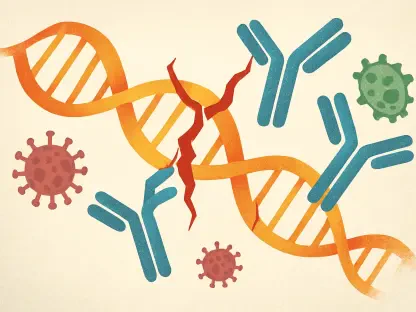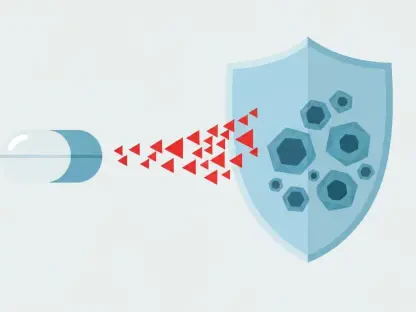Imagine a diagnosis so devastating that it offers a median survival of just one year, primarily striking children and young adults with little hope for effective intervention. Diffuse midline glioma with an ### K27M mutation, an ultra-rare and aggressive brain cancer, affects roughly 2,000 individuals annually in the US, leaving families and clinicians grappling with a dire lack of options. This review aims to evaluate Modeyso (dordaviprone), a groundbreaking treatment introduced by Jazz Pharmaceuticals, assessing its potential to transform outcomes for those battling this relentless disease.
The urgency for novel therapies in this space cannot be overstated, as historical approaches have failed to provide systemic solutions, often resulting in survival rates plummeting to under six months post-progression after initial therapy. Modeyso steps into this void as a beacon of possibility, targeting a specific genetic mutation with a tailored approach. This evaluation seeks to unpack its impact, offering insights for patients and families desperate for a lifeline.
Overview of Modeyso: Features and Mechanism
Modeyso emerges as a pioneering weekly oral capsule, developed by Jazz Pharmaceuticals, and stands as the first FDA-approved treatment specifically for ### K27M-mutant diffuse midline glioma. This small molecule drug employs a dual mechanism, targeting the dopamine receptor D2 and the mitochondrial protease ClpP, a combination designed to disrupt cancer cell processes in a highly aggressive malignancy. Its approval under the FDA’s accelerated pathway marks a significant milestone in addressing a condition with no prior targeted therapies.
The drug’s journey to market involved a substantial $935 million acquisition deal with Chimerix by Jazz Pharmaceuticals, reflecting confidence in its innovative potential. This strategic move underscores Modeyso’s position as a frontrunner in the rare cancer treatment landscape. By focusing on molecular vulnerabilities, it offers a distinct departure from conventional methods, aiming to alter the trajectory of a disease notorious for its resistance to treatment.
Clinical Performance and Efficacy Data
Delving into Modeyso’s clinical outcomes, data from five open-label studies involving 50 patients—both pediatric and adult, aged one year and older—reveals a promising overall response rate of 22%. The median duration of response among these patients was 10.3 months, a notable figure for a condition with such a grim prognosis. These results provide a foundation for understanding the drug’s capacity to offer meaningful benefits in recurrent cases of this brain cancer.
Further analysis highlights the durability of these responses, with 73% of responders maintaining their results for at least six months, and 27% sustaining benefits for a year or more. Such statistics suggest that Modeyso can deliver sustained impact for a significant subset of patients, a critical factor in evaluating its therapeutic value. This durability offers a glimpse of stability in an otherwise unpredictable disease course.
Currently, the ACTION trial is underway to assess Modeyso’s effectiveness in newly diagnosed patients following radiotherapy, aiming to build on the initial findings under the FDA’s accelerated approval framework. This ongoing research, spanning from 2025 onward, is essential for confirming the drug’s broader clinical benefits. The outcomes of this study will likely shape future treatment protocols and solidify Modeyso’s role in clinical practice.
Strengths and Limitations of Modeyso
One of Modeyso’s most compelling strengths lies in its status as the first targeted therapy for ### K27M-mutant diffuse midline glioma, filling a critical gap for a patient population previously devoid of systemic options. This innovation brings a renewed sense of hope, with the potential to enhance both survival rates and quality of life. For many, it represents a shift from palliative care to active intervention, a profound change in approach.
However, limitations temper this optimism, as the FDA’s accelerated approval is conditional, hinging on confirmatory trial results to validate long-term efficacy. Additionally, while the 22% response rate is encouraging, it indicates that a majority of patients may not experience benefits, raising questions about its universal applicability. These constraints highlight the need for careful patient selection and realistic expectations in clinical settings.
The variability in response also suggests that Modeyso’s impact may differ across diverse patient profiles, influenced by factors such as age, disease progression, and genetic nuances. Clinicians must weigh these considerations when integrating this treatment into care plans. As research progresses, a clearer picture of its optimal use will likely emerge, refining its place in therapeutic strategies.
Final Assessment and Recommendation
Modeyso stands as a groundbreaking addition to the fight against an ultra-rare brain cancer with historically dismal outcomes, offering a targeted approach where none existed before. The clinical data, demonstrating a 22% response rate and significant response durability, underscores its potential to alter the landscape for patients with ### K27M-mutant diffuse midline glioma. This treatment marks a pivotal advancement, addressing an unmet need with innovation.
A cautious yet optimistic recommendation emerges from this evaluation, recognizing Modeyso as a vital new tool for affected individuals while acknowledging the importance of forthcoming data. Confirmatory studies are essential to establish its long-term safety and effectiveness, ensuring that initial promise translates into sustained impact. Until then, its application should be guided by careful consideration of current evidence.
Concluding Thoughts and Practical Guidance
Reflecting on the journey of Modeyso, its introduction has carved a significant path forward for those battling ### K27M-mutant diffuse midline glioma, setting a precedent in the realm of rare cancer therapies. It has ignited a spark of progress, demonstrating that even the most challenging medical conditions can be met with innovative solutions. This milestone has reshaped expectations for patients and clinicians alike.
For families and healthcare providers navigating this diagnosis, the next steps involve staying informed about the outcomes of ongoing trials like ACTION, which promise to refine understanding of the drug’s capabilities. Engaging with specialists to discuss Modeyso’s suitability on a case-by-case basis has become crucial, given its conditional approval status. Monitoring updates from 2025 onward on research developments can guide more confident adoption in treatment plans.
Beyond individual care, this advancement has prompted a broader call to action for increased investment in rare disease research, ensuring that other underserved conditions might also find their breakthrough. Collaboration between pharmaceutical entities, regulatory bodies, and medical communities needs to accelerate, building on Modeyso’s foundation. This collective effort holds the key to unlocking further life-changing therapies for those in dire need.









